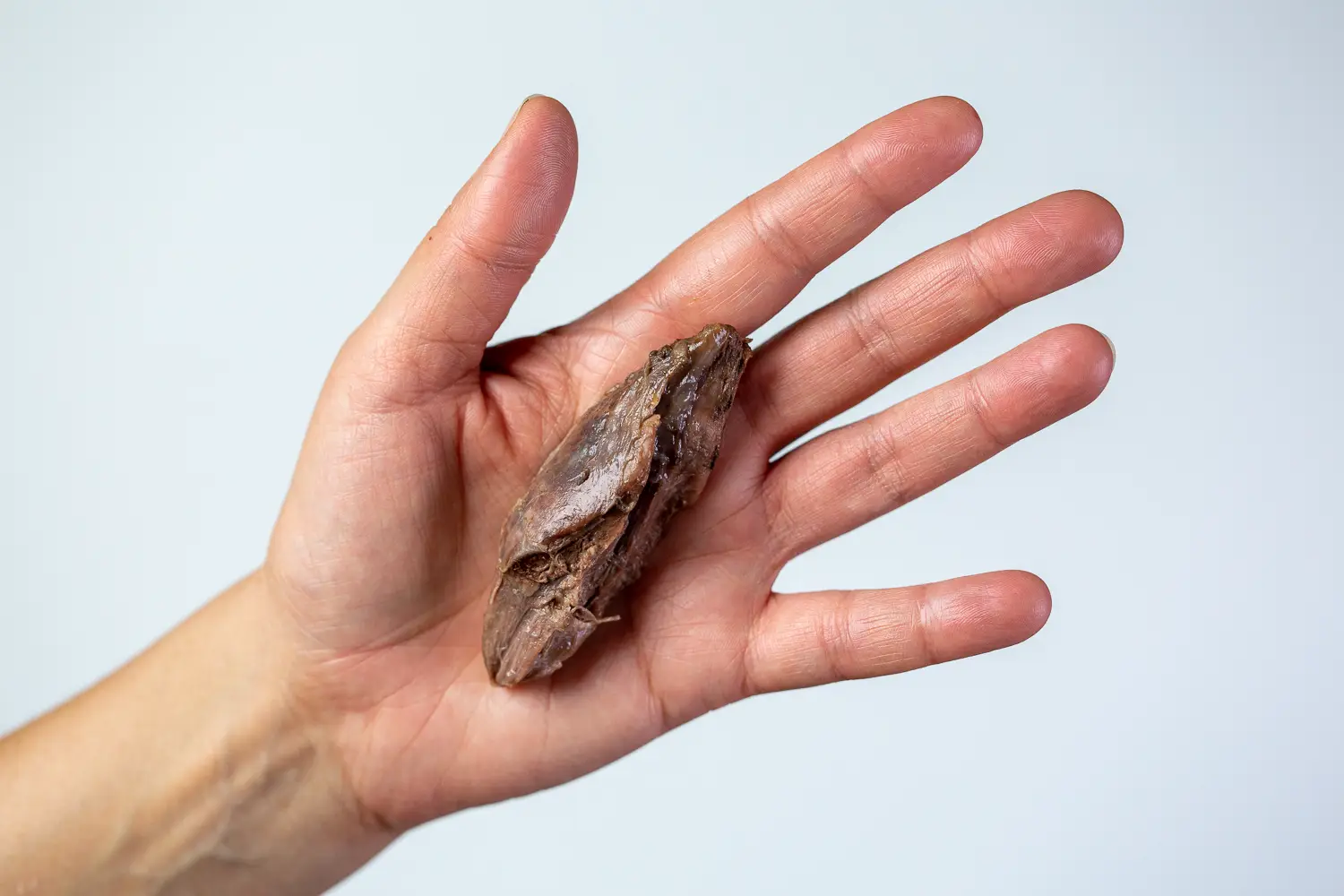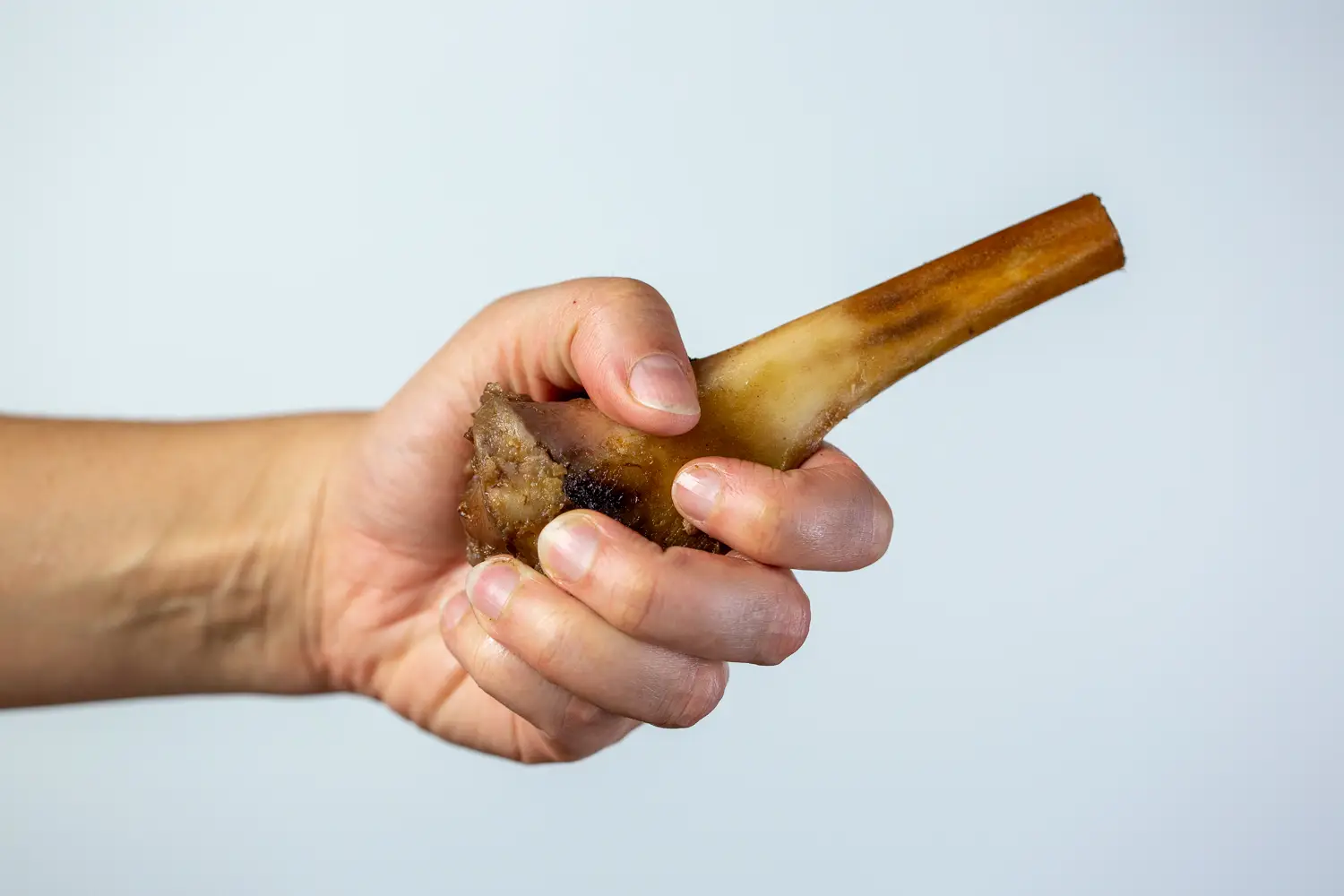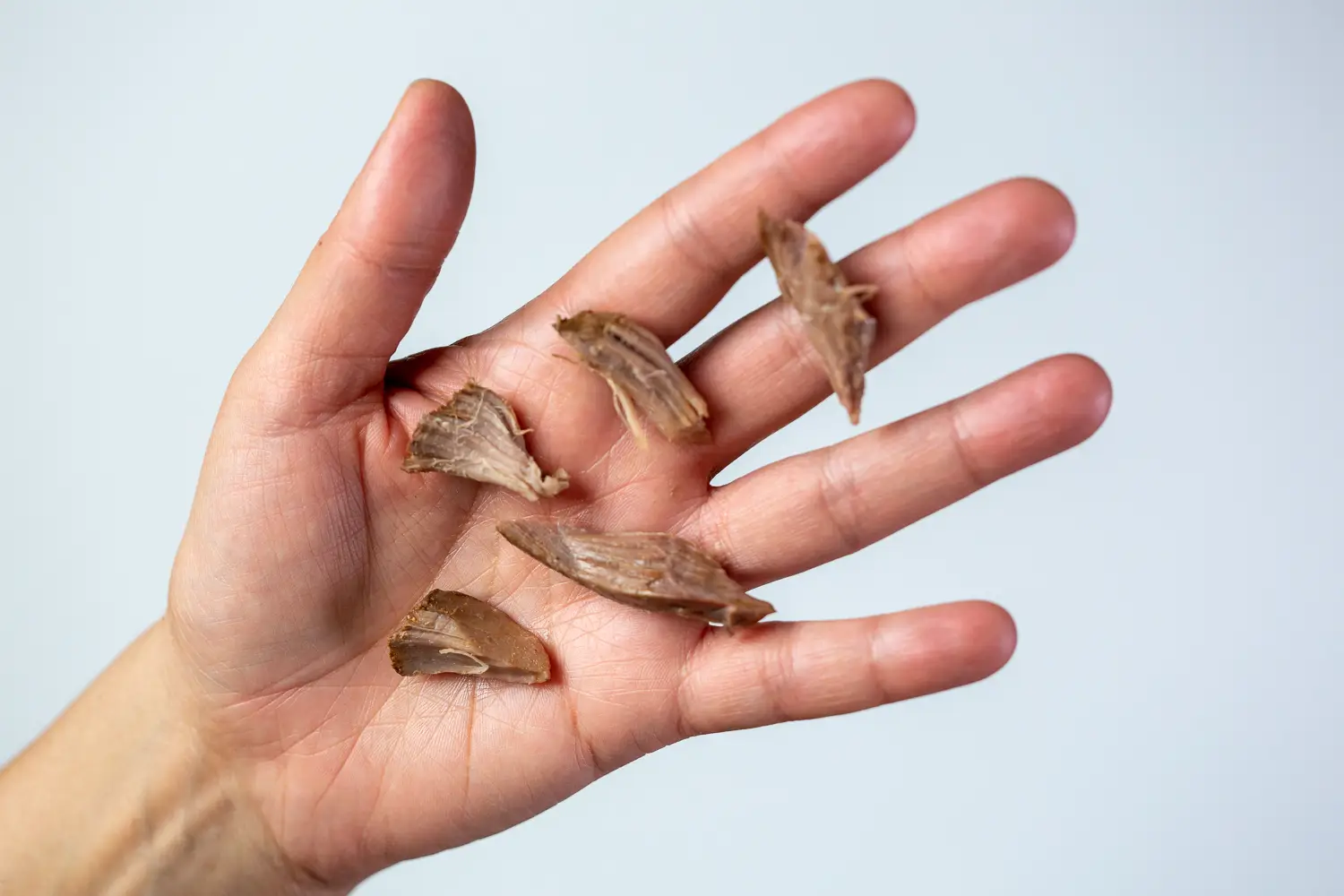Lamb
Meat
Age Suggestion
6 months
Iron-Rich
Yes
Common Allergen
No

When can babies have lamb?
Lamb, when well-cooked, may be introduced as soon as baby is ready to start solids, which is generally around 6 months of age.
Lambs are the young of domesticated sheep, which have long been raised for both their wool and red meat. In centuries past, adult sheep (mutton) was more commonly eaten because it was widely available year-round, and its flavor was desirable. Mutton is still a popular meat in some parts of the world, but lamb is increasingly a top choice in many cuisines. Its richness is often complimented by acidic ingredients like wine or vinegar and fresh herbs like mint and rosemary. In the regions where lamb is popular, there are sometimes distinctions drawn under the category of lamb, from the age of the animal, to when it was born, to what it was fed.
Is lamb healthy for babies?
Yes. Lamb is rich in protein and fat, in addition to iron, choline, selenium, zinc, and vitamins B6 and B12. Together, these nutrients support growth, brain development, energy to play and explore, healthy red blood cells, taste perception, immune health, hormone function, metabolic processes, and more. Babies need increasing amounts of iron starting at the 6-month mark, when their reserves become depleted, and lamb offers a great source of dietary iron at this stage of baby’s life.
★ Tip: Ground lamb is a high-risk food for foodborne illness such as E. coli and Salmonella if not cooked thoroughly. When cooking ground lamb, it is important to heat the meat to an internal temperature of 160 F (71 C) to kill harmful bacteria.
Is lamb a common allergen?
No. Lamb is not a common food allergen, although lamb and mutton allergy have been reported. Cooking the meat decreases the risk of developing an allergic reaction to lamb. In addition, certain tick bites (mainly the Lone Star tick in the continental United States, but other ticks in different parts of the world), are associated with the development of an allergy to galactose-alpha-1, 3-galactose (“alpha gal”), a sugar which is present in all non-primate mammalian meat. This results in a delayed allergic reaction 3-8 hours after red meat, such as mutton, is consumed. Some individuals with alpha gal allergy also react to small amounts of the sugar present in dairy products, gelatin, or organ tissues (such as liver) from mammals.
Some individuals with an allergy to lamb will also exhibit contact sensitivity to wool or lanolin (a wool alcohol), but most individuals with wool or lanolin sensitivity can consume lamb without experiencing any reaction.
As you would when introducing any new food, start by offering a small quantity for the first few servings and watch closely as baby eats. If there is no adverse reaction, gradually increase the serving size over time.
Is lamb a choking hazard for babies?
Yes. Lamb can be firm and challenging to chew, which are qualities that increase the risk of choking. To reduce the risk, refrain from cutting lamb into chunks or cubes and prepare and serve it in an age-appropriate way as described in the How to Serve section. Also, be sure not to overcook lamb, as this causes it to be dry and more challenging to chew and move backwards to swallow. As always, make sure you create a safe eating environment and stay within an arm’s reach of baby during meals.
Learn the signs of choking and gagging and more about choking first aid in our free guides, Infant Rescue and Toddler Rescue.
Videos
When can babies have lamb meatballs?
Babies can eat meatballs starting at 6 months of age as long as the meatballs are thoroughly cooked, soft, and at least 2 inches (5 cm) in diameter. The bigger the meatball, the less likely that baby will pop the whole thing in their mouth. The softer the meatball, the lower the risk of choking: to soften meatballs, cook them in sauce or stew or mix softening ingredients into the meatball batter, such as breadcrumbs, cooked grains, or nut or seed flours. Take care with pre-cooked or store-bought frozen meatballs: they are often small (closer in size to a baby’s mouth) and firm, qualities that increase the risk of choking. When sharing these types of meatballs with babies, minimize the risk of choking by breaking the meatballs into tiny crumbles to mix into a soft, scoopable food, such as mashed vegetables, porridge, or yogurt.
Meatballs can cause gagging as they fall apart in the mouth, and if the meat is dry, it can stick to the roof of the mouth, leading to more intense gagging and even a vomit. If this happens, try to stay calm and give baby the opportunity to work the food forward on their own. As babies munch on a large meatball, they may break down the food into smaller sizes. If the smaller size makes you nervous, simply take away the smaller piece and replace it with a new, large meatball. You can also break the pieces into crumbles and mix them into another food, such as mashed potatoes, any puree or mash, or yogurt.
Finally, know that meatballs may contain various common allergens, including dairy, egg, sesame, and wheat. Be sure to read the labels on store-bought prepared foods and safely introduce any allergens to the child before sharing the prepared food.
How do you serve lamb to babies?
Every baby develops on their own timeline, and the suggestions on how to cut or prepare particular foods are generalizations for a broad audience.
6 months old +:
Mix ground lamb that has been cooked well-done into an easy-to-scoop food like mashed vegetables, porridge, or yogurt. Avoid serving crumbles of dry, ground meat on their own, as they can pose a higher risk of choking. Alternatively, prepare burgers, meatballs, or patties that are at least 2 inches (5 cm) in diameter and cooked until the internal temperature reaches 160 F (71 C). Make sure the cooked burger or meatball is soft enough to be easily smushed by baby’s gums. To test if it is soft enough, hold it between your thumb and pointer finger and give it a gentle squeeze. Dipping the patties in applesauce, guacamole, yogurt, or other sauces can aid swallowing.
Alternatively, offer bone-in lamb chop with loose chunks of meat and fat removed or thick strips of braised lamb shank about the size of two adult fingers pressed together. At this age, baby will mostly just suck and gnaw on the chop or strip of meat. If baby succeeds in biting off a big piece, take a deep breath, stay calm, and give the child a chance to work with the food. In most cases, if the piece of food is too big, baby will spit it out or the gag reflex will help thrust it forward and out of the mouth. If the child needs assistance getting the piece of food out of the mouth, put your hand beneath their chin to indicate they can spit out the food.
Note: Soft burgers and meatballs often fall apart in the mouth, and when this happens, try to stay calm and give baby the opportunity to work the food forward with the tongue. If baby needs assistance getting the piece of food out of the mouth, put your hand beneath their chin to indicate they can spit it out. Sticking your own tongue out can also help teach babies how to spit.
9 months old +:
Serve small shreds of well-cooked lamb either on its own or as part of a meal. If you want to share stews, kebabs, and other family meals with cubed meat, make sure to shred the meat to minimize the risk of choking. You can also break lamb meatballs or burger patties into small, bite-sized pieces for the child to practice the pincer grasp and fine motor skills. If baby is not quite ready to pick up smaller pieces of food, continue to offer bone-in lamb chops, ground lamb in sauces, or whole burgers or patties that are at least 2 inches (5 cm) in diameter and cooked until the internal temperature has reached 160 F (71 C). Dipping lamb in a sauce can aid swallowing. If a big piece of meat breaks off in the mouth, coach the child to spit the food out by dramatically sticking out your own tongue and saying “ah” repeatedly.
12 months old +:
Serve shredded lamb chop or braised lamb shank or thin strips of lamb cut into bite-sized pieces and dipped in sauce to keep the meat tender, either on their own or as part of a meal. Avoid kebabs or cubes of meat, as these continue to pose a high risk of choking. If you’d like to share lamb kebabs with a toddler, pull into shreds or bite-sized pieces. You can also offer meatballs or patties cut up into bite-sized pieces as finger food or fork practice. Dipping the meat in a sauce can aid swallowing. If a big piece of meat breaks off in the mouth, you can coach the child to spit the food out by dramatically sticking out your own tongue and saying “ah” repeatedly. At this age, lamb sausage may also be served in moderation—just make sure to quarter the sausage lengthwise so it is no longer round.
18 months old +:
Offer ground lamb patties, meatballs, and shredded or minced lamb meat. Refrain from offering lamb kebabs or cut into cubes or large chunks, as these sizes continue to pose a higher risk of choking. Lastly, consider serving larger strips of lamb that the child can practice taking bites from to build their tearing skills.



Our Team
Written by
Expert Tips Delivered to Your Inbox
Sign up for weekly tips, recipes and more!
Copyright © 2024 • Solid Starts Inc






